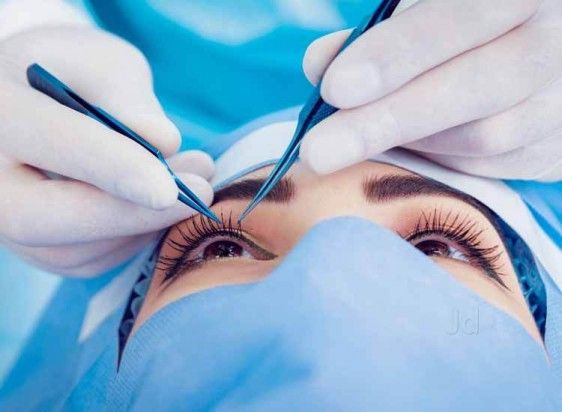There are numerous kinds of vision corrective surgeries, some involving the complete replacement of the lens, while others simply reshape the cornea to enable the effective focus of light on the retina.
The more common means of correcting vision issues is the use of recommended glasses and eye contact lenses. However, more people are starting to prefer a permanent correction of the issue as becoming accustomed to using contact, and glasses can have a negative effect on the users with time. For one, the lifestyle of these persons is instantly altered, as they have to give a level of dependence to these materials for proper vision.
With the availability of new vision correction strategies like corrective surgeries, it becomes easier for affected persons to have an alternate choice. There are numerous kinds of vision corrective surgeries, some involving the complete replacement of the lens, while others simply reshape the cornea to enable the effective focus of light on the retina.
Here are some popular types of vision corrective surgeries;
- LASIK (Laser in-situ Keratomileusis)
The LASIK eye procedure involves the reshaping of the cornea to enable light effectively reach the retina. This procedure is quite versatile as it is compatible with near sighted, far sighted and astigmatism patients. A flap of the outer layer of the cornea is carved out to give the eye surgeons access to the inner tissues. This undoubtedly requires a high level of skill and precision, which the advanced imaging technology used by LASIK professionals allow.
- PRK (Photorefractive keratectomy)
This method involves the reshaping of the cornea with a laser. Here, only the surface of the cornea is repositioned, and not the entire cornea as is the case in the LASIK procedure. It also makes use of computer imaging technology to create the detailed corneal images required to make the procedure successful. People with nearsightedness, farsightedness and astigmatism on a mild to moderate level will be well satisfied with the use of this method.
- LASEK (Laser Epithelial Keratomileusis)
This procedure is performed similarly to the PRK procedure, with only little differences. With the use of an alcohol solution, the epithelial cells in the eyes are loosened by the eye surgeon after initially creating a flap for this.
The cornea is then reshaped by a laser, and the flap is securely set with a contact lens to allow it to adjust while corrections and healings take place. The LASEK eye surgery is also effective for near sight, far sight and astigmatism.
- ALK (Automated Lamellar Keratoplasty)
This procedure does not use laser for its treatment; instead, an incision is made in the sub-layer of the cornea. A flap is created in the cornea to give the eye surgeon access to the underlying parts. This method is mostly used for people with serious myopic problems. It is also effective for long sightedness to an extent.
- RLE (Refractive lens exchange)
This procedure is used in the correction of cataracts. It is also famous for its correction of serious farsightedness or nearsightedness as well as dry eyes, thin corneas and other minor issues. An incision is made on the edge of the cornea to allow the doctor to remove the original lens of the eye, which is then replaced with a plastic lens.
- EpiLasik
Just like in PRK, a thin layer of the cornea is separated and reshaped. This layer can be removed, and it can also be replaced. A soft contact lens is then applied to bind the area until it is fully healed.
- PRELEX (Presbyopic lens exchange)
Presbyopia is a term given to an eye lens that has lost its flexibility. You can tell a person suffering this defect from their difficulty to focus on close objects. PRELEX involves the implant of a multifocal lens by the eye surgeon to restore the flexibility of the lens, thereby bring back focus to the eyes.
- Intacs/Intracorneal ring segments (ICR)
Here, a tiny incision is made on the cornea. The cornea is then flattened with the use of two crescent-shaped plastic rings, allowing the alteration of light focus on the retina.
- Phakic Intraocular Lens Implants
A small incision is made at the edge of the cornea through which the implant is passed. This implants come in very handy for patients who are too nearsighted for PRK and LASIK, and in this procedure, the natural eye lens is not replaced.
- AK (Astigmatic Keratotomy)
This is used to correct astigmatism without using a laser. The football-shaped corneas found in people suffering from astigmatism can be made more relaxed with the incisions made on the steepest part of the cornea in this procedure.
If you want to get the best laser eye surgery, then you can book an appointment with an eye specialist at Optimal Vision who offer the most advanced laser eye surgery in London.







*********astin@aladeen.org
I had no idea that there were so many different types of corrective eye surgeries, the sheer number has just surprised me so much. The only reason I found out about this was due to the fact that I was looking up refractive surgery milan. All in all though, the sheer number is pretty astonishing.